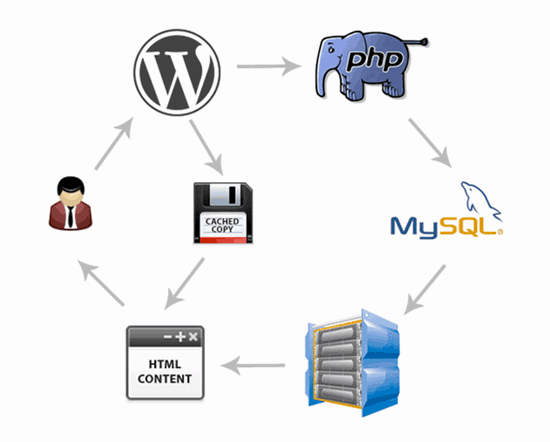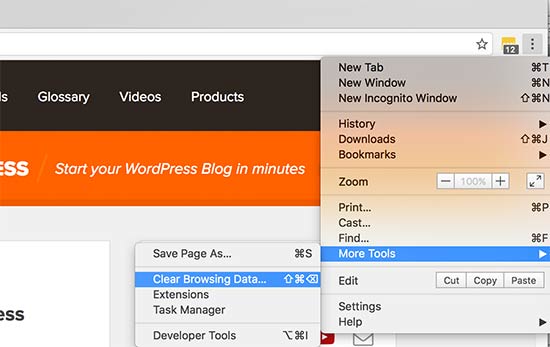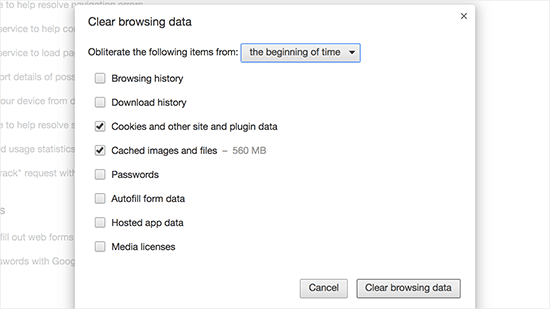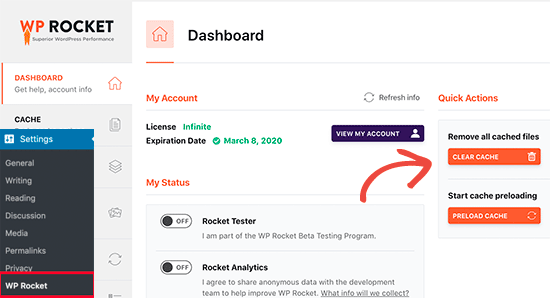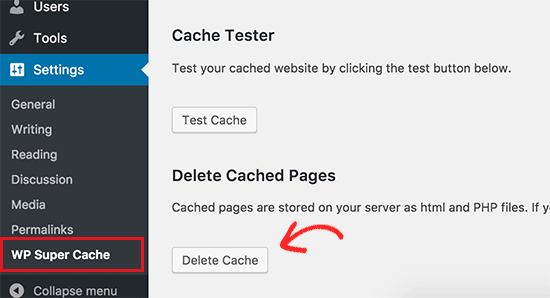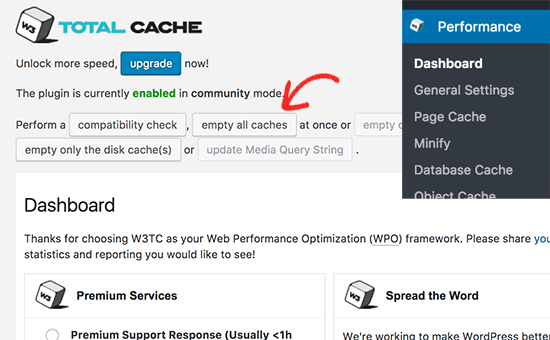Your web browser, hosting server, and caching plugins can all serve cached content which can make it difficult for you to see the changes you made to your website right away.
Clearing your WordPress cache is also the first troubleshooting advice that you’ll often hear.
In this article, we will show you how to properly clear the cache in WordPress. We’ll cover browser cache, web hosting cache, and top WordPress caching plugins in this guide.
What is Cache and When Do You Need to Clear Cache?
Caching solutions store a static version of your website. This allows WordPress to skip running the heavier PHP scripts and improve your website speed.
There are many different type of caching solutions available. The most popular ones are WordPress caching plugins like WP Rocket and WP Super Cache.
These plugins offer an easy to use interface for controlling what to cache, when to expire cached content, and cleaning up cache on demand.
If you are using a CDN service like MaxCDN, then they would also serve cached copies of static content.
If you’re using a web application firewall like Sucuri or CloudFlare to improve your WordPress security, then they also have their own cache to speed up your site and reduce downtime.
Lastly, most modern web browsers will also store cached versions of pages on your computer.
The purpose of caching is to speed up the website and improve overall user experience. However, sometimes this causes you to not see the changes you make right away which can be frustrating. In that case, you will need to clear caches to see your changes live.
Having said that, let’s take a look at how to clear your cache in WordPress.
Step 1: Clear Your Browser Cache
First, you need to clear your web browser cache. Most web browsers can store static content like stylesheets, JavaScript, images from a website to make your subsequent visits faster.
However, sometimes web browsers may fail to realize that a web page has changed. Instead of fetching a fresh copy, they may still reload the page from the cached version stored on your computer.
Here is how you will clean your browser cache in Google Chrome. First, you need to click on the menu icon and then select More Tools » Clear Browsing Data.
This will bring up a popup where you can select the content you want to remove. Make sure that cached images and files option is checked and then click on the ‘Clear browsing data’ button.
You have successfully cleared your browser cache, and you can now try visiting your website.
If you are still not seeing the changes you made, then move on to the next steps in this article.
Step 2: Clear Cache in Your WordPress Caching Plugin
If you are using a WordPress caching plugin on your site, then you need to clear your plugin cache. Most caching plugins allow you to easily do that from the plugin’s Settings page.
Clear Cache in WP Rocket
WP Rocket is the best WordPress caching plugin on the market. The best part about using WP Rocket is that it proactively builds your WordPress cache in the background, so your users are always served a cached version.
It also makes it very easy to clear caches files with a single click.
Simply go to the Settings » WP Rocket page and click on the ‘Clear Cache’ button under the dashboard tab.
WP Rocket will now clear all cached files for you.
Clear Cache in WP Super Cache
WP Super Cache is a popular WordPress caching plugin. It allows you to clean or purge all cached content with a single click.
You need to visit Settings » WP Super Cache page and click on ‘Delete Cache’ button.
That’s all, WP Super Cache will now delete all cached files from your website.
Clear Cache in W3 Total Cache
W3 Total Cache is another popular WordPress caching plugin. It also makes it super easy to clear cache with one click.
Head over to Performance » Dashboard page and click on ’empty all caches button.
W3 Total Cache will now delete all cached content for your site.
Clear Cache in Sucuri
If you’re using a WordPress firewall like Sucuri to protect your website, then they also have their own layer of caching.
You can clear the cache from your Sucuri plugin by going to Sucuri » WAF menu in your WordPress admin area.
Bonus Tip: If you have recently moved your WordPress website, then you may also need to clear your DNS cache. This will ensure that you are getting the updated DNS information and accessing the newer version of your website.
We hope this article helped you learn how to clear cache in WordPress.

